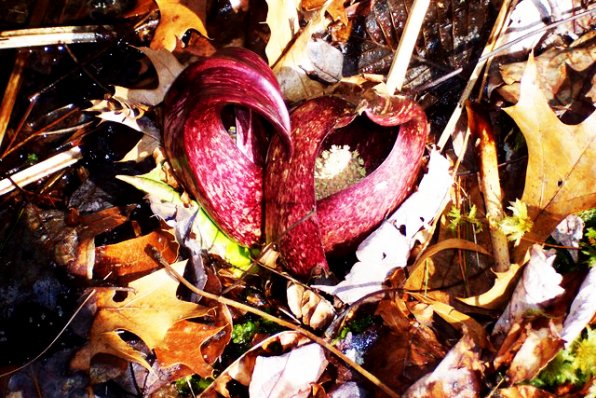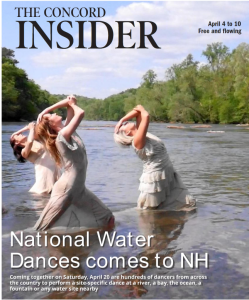“Skunk cabbage is the first wildflower to bloom in New Hampshire's spring,” declared Mary Holland as she began a presentation entitled, “Watch Spring Emerge Through the Eyes of a Naturalist” at the New Hampshire Audubon McLane Center on March 7. She went on to explain the remarkable features of this unusual plant.
While projecting a picture of skunk cabbage on a large screen, she said this plant has an incredible ability to generate heat, helping it to poke its way up through the February snows. It also has a foul-smelling skunk-like odor attracting the year's first flying insects to pollinate the tiny flowers that surround a knob shielded by a shell-shaped, monk-like hood.
Even the deep wine-red or maroon color of the plant's first leaves resembles raw decomposing flesh to mimic carrion, making it a gathering place for scavenging flies. This flower produces the first pollen of the season for the honey bees, who also find warmth within the flower's hood.
Later, the lush green cabbage-like leaves unfurl up to 2 feet. Grazing animals soon learn to avoid them because they create a burning sensation if eaten. If you break off a leaf and crush it, the obnoxious stench becomes more pronounced. But it is this rancid smell that woos – from a long distance – the insects that delight in foul odors.
Holland said that skunk cabbage plants love swampy areas, and they bring to life the slumbering habitat of early spring. They have the advantage of March's leafless forest allowing more sunlight to filter through to the ground below. She said, “It seems so unfortunate that our earliest spring flower should possess so unpleasant an odor as to earn for itself the unflattering name of skunk cabbage.”
At the close of the program Holland signed her book, “Naturally Curious, A Photographic Field Guide and Month-by-Month Journey through the Fields, Woods and Marshes of New England.”
Holland showed many other photos about the signs of spring in nature, but she used the skunk cabbage as an ice breaker in celebrating the arrival of spring just as the skunk cabbage can use its warmth to break through the ice of winter.










